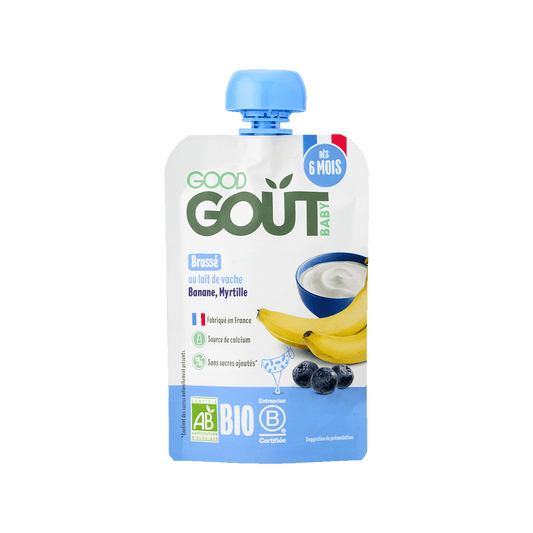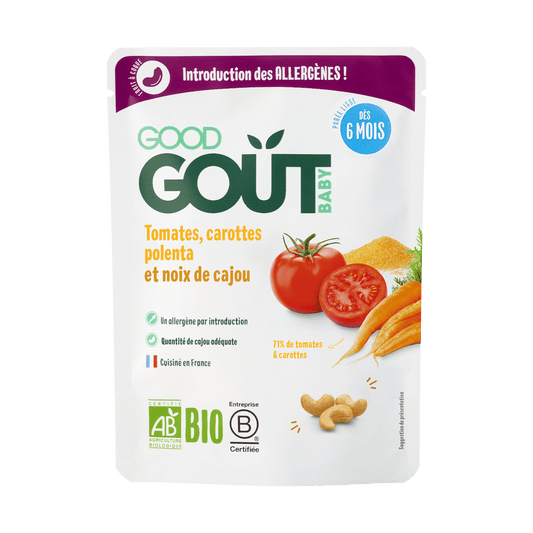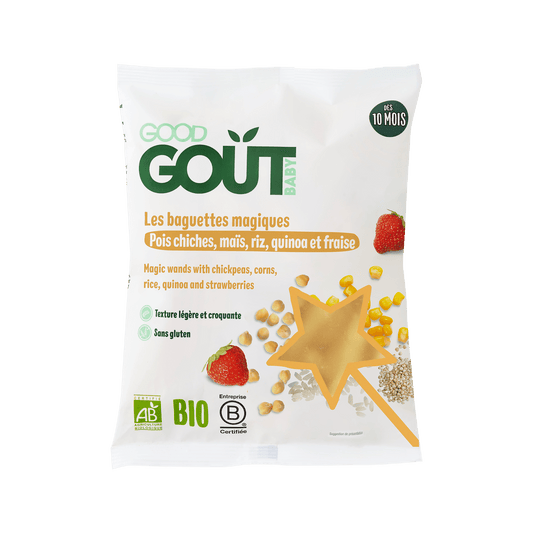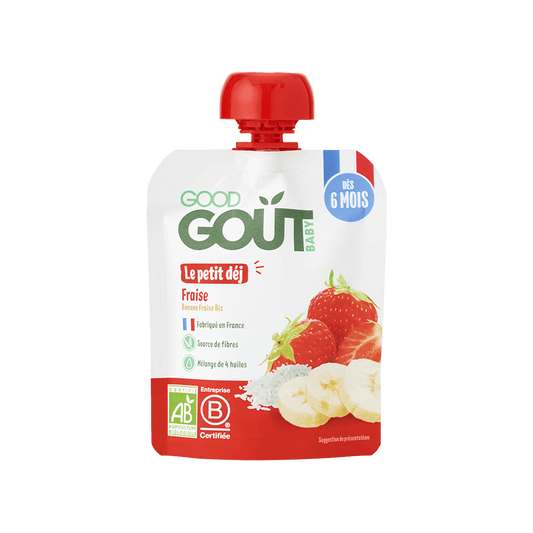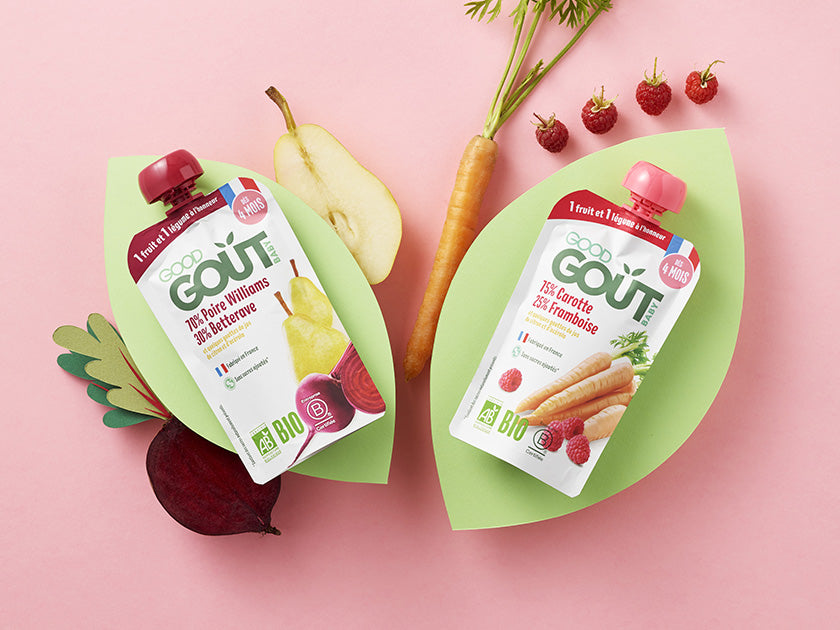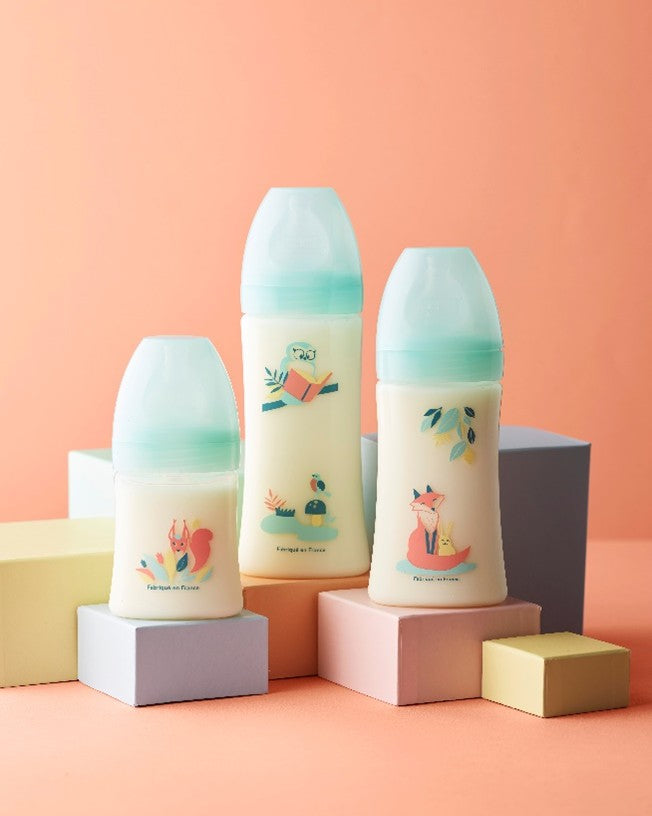Important notice: Breast milk is the ideal and natural food for every infant: it is best suited to their specific needs. When using infant formula, when the mother cannot or does not wish to breastfeed, it is important to scrupulously follow the instructions for preparation and use and to follow the advice of the medical profession.
When it comes time to alternate between breastfeeding and bottle feeding
Every mother chooses the most appropriate time for her and her baby to start alternating between breastfeeding and bottle feeding. The timing of alternating between breast milk and formula feeding also depends on your own circumstances. It may be a personal choice, or it may be the end of your maternity leave.
In this second case, perhaps you know that in France, breastfeeding in the workplace is regulated? Until the baby's first birthday, the law provides for 1 hour of breastfeeding per day for employees, at a rate of 30 minutes in the morning and 30 minutes in the afternoon. ¹
This time applies to mothers who are absent to breastfeed their baby or who are expressing their milk , and it is 20 minutes if the workplace has a room dedicated to breastfeeding . ¹ However , be aware that the provisions depend on each collective agreement, so it is time to take a look at the one that concerns you.
Mixed breastfeeding : what does it mean ?
This may be a question you're asking yourself, so here's how to get some clarity ! Mixed feeding refers to alternating between breastfeeding and bottle-feeding infant formula ² . Switching to breast milk via bottle-feeding is therefore not, strictly speaking, mixed feeding .
Which infant milk to use to alternate between breastfeeding and bottle feeding? ?
For healthy babies, there are three types of infant milk , classified according to the baby's age , when the mother does not wish or cannot breastfeed :
-
First -stage infant milk is intended for babies from birth up to 6 months .
-
2nd stage infant milk can be offered to babies from 6 months , in addition to a varied diet and in agreement with your healthcare professional, and up to 10 to 12 months. ³
-
Finally, growing-up milk is recommended for children from 1 to 2 months (from 10 months for organic growing-up milk) 4 and up to 3 years, in particular because of its composition of nutrients specific to your child's nutritional needs. 5
Your healthcare professional is the most qualified person to help you choose the infant milk with which you will alternate between breastfeeding and bottle feeding.
Tips for alternating breastfeeding and bottle feeding with complete peace of mind
When you alternate between breastfeeding and bottle feeding, your baby will follow their own rhythm to get used to this new experience. To help make this transition as smooth as possible, here are some tips for you:
-
First of all, the technique for preparing a bottle of infant milk: infant milk is most often presented in powder form, to be diluted in water at room temperature. You can opt for tap water or bottled water. In the latter case, it must bear the words "suitable for preparing infant food " 6 . Infant milks come with measuring scoops , the volume of which depends on the baby's age, but also on the formulas and manufacturers : you simply have to dip it in the powder and then level it off before putting it in the water . 7
-
The right position : sit comfortably with your baby snuggled up against you, in a semi -sitting position, so that their head is well supported.
-
The right time: When you start alternating between breastfeeding and bottle feeding, replacing the less abundant afternoon feeding with a bottle of infant formula is the ideal solution to avoid engorgement . 9
-
A serene progression: as the days go by, your breasts will get used to this new rhythm (between 2 and 6 days on average), you will be able to replace another feeding of the day with a bottle of infant milk. It is also recommended to keep the morning, evening and night feedings, because these are the most abundant. 10
Your body is a fantastic machine , and your breast milk production will gradually adapt. If your lactation decreases, the best solution is to pump your milk to maintain it. As you saw above, if you are an employee, you have the right to pump your milk 11 in your professional environment. You will then need to have a container to put in the refrigerator until you return home. And, if you live far from your workplace, it will fit in a small cooler for the duration of the trip .
At Biostime, we do everything possible to support you as best we can to alternate between breastfeeding and bottle feeding.
What guides us is baby's comfort and nutritional needs. Our infant milk formulas are designed by infant nutrition experts and always comply with current regulations while supporting WHO recommendations. At Biostime and Inostime , food safety is at the heart of our priorities. These priorities are shared every day with the Isigny-Sainte-Mère cooperative, which supports Normandy breeders. This is also what allows us to offer you infant milks with high nutritional quality formulas, without palm oil, and produced locally in Normandy.
To your testimonies!
We hope this article has answered your questions.
If you have any questions, or would like to share your experience with us, please do not hesitate to write to us at contact@biostime.fr or by private message on Instagram @biostimefr .
2.https://www.mpedia.fr/art-allaitement-mixte/
3.https://www.ameli.fr/gironde/assure/sante/themes/alimentation-0-3-ans/debut-diversification-alimentaire
4. See regulations
5.https://www.mpedia.fr/art-choix-des-laits-croissance/
6.https://www.mpedia.fr/art-eau-biberon/
7.https://www.mpedia.fr/art-preparer-un-biberon/
8.https://www.mpedia.fr/art-premiers-biberons/
9.https://www.mpedia.fr/art-premiers-biberons/
10.https://www.mpedia.fr/art-allaitement-mixte/
11.https://www.mpedia.fr/art-tirer-et-conserver-son-lait/?sr=838

